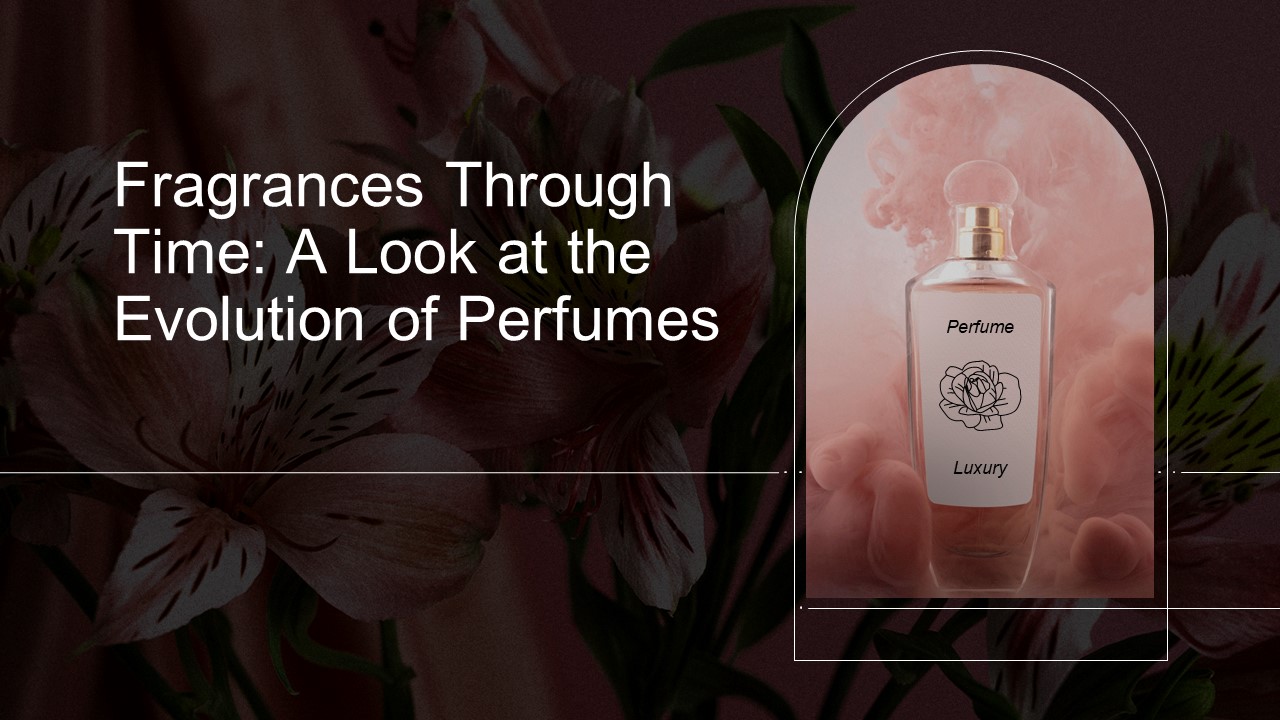Fragrances Through Time: A Look at the Evolution of Perfumes - PowerPoint PPT Presentation
Title:
Fragrances Through Time: A Look at the Evolution of Perfumes
Description:
It is possible to trace the history of scent to earlier civilizations like Rome and Egypt. New methods and substances have emerged over time, advancing the industry. The fragrance market is currently a growing industry with a wide variety of fresh brands and unique scents. – PowerPoint PPT presentation
Number of Views:7
Title: Fragrances Through Time: A Look at the Evolution of Perfumes
1
Fragrances Through Time A Look at the Evolution
of Perfumes
Perfume
Luxury
2
Evolution of Perfumes
- The use of fragrances dates back to the medieval
period. The Roman Empire, Egypt, Mesopotamia, and
the Persian Empire all employed fragrances before
anybody else. They used scent for cosmetic and
therapeutic purposes in addition to bathing. In
this blog, we'll explore the history of perfume
as well as its early creation and uses.
3
History of Fragrances Around the World
Perfume
Luxury
4
- The oldest perfumes were found by archeologists
in Cyprus and were 4000 years old. Over the
years, humans have used perfume in an extensive
number of ways. In many cultures, aromas are
accessible only to the elite classes since they
are extremely expensive and hard to find.
5
When Was Perfume Invented?
6
- The first human to create a perfume was a female
chemist named Tapputi. The story behind the
inventor of the perfume has been found on a clay
tablet from Mesopotamia, claiming that Tapputi
created perfume sometime in the second century BC.
7
Ancient Egyptian Fragrance
8
- In ancient Egypt, scents and smells were very
important for all life. They love to wear
perfume. They create perfume from many different
plants, flowers, and wood fragments, along with
the addition of required fats and oils. Ancient
people usually used moringa, linseed, sesame,
and, castor oils in their perfumes.
9
History of Middle Ages perfumes
10
- From 5th to the 11th century, Ancient Egypt and
Rome peoples declined to use the perfumes. This
was due to a number of factors, including the
increase in Christianity, their refusal to use
perfume as a form of vanity, and their own
deaths. It results in an anti-germ aversion and a
preference for cleanliness over perfume. - Still, perfume did not totally disappear during
the Middle Ages. They were still used by some
people. Wealthy and powerful people used to wear
perfume for religious ceremonies and medicinal
purposes.
11
History of 19th Century Perfumes
12
- The 19th century was a golden age for perfumery.
As new techniques were developed for making
fragrances. It was the heyday of the aromas
industry. Fresh methods were developed to create
perfumes. The growing popularity of synthetic
perfume has been one of the perfumery's most
biggest innovations. Synthetic fragrances were
created by chemists, who were able to identify
and separate the vital components that give
natural perfume their unique aromas.
- In the realm of scent, the 19th century saw
significant upheaval and interchange. At that
time, new techniques and ingredients were
developed to create some of the most iconic
perfumes in history.
13
20th Century Perfumes
14
- In term of innovation the 20th century was an
excellent period for the perfume business. A
number of crucial aromas gained popularity,
including those created by Ernest Beaux and
Jacques Guerlain.
- In the perfume business, the designer label began
to flourish in the middle of the 20th century.
Fashion brands like Christian Dior started
developing their own distinctive scents, which
were often encouraged as extensions of their
textile and product collections. The scent
business went worldwide in the late 20th century.
A large range of consumers were targeted in the
marketing of perfume as it became more accessible
and affordable. Niche fragrances, which are made
by particular perfumes and often use more
uncommon ingredients, started to become more
common in the final half of this century.
15
Today Perfume
16
- In todays generation new brands and perfumes
frequently appear in the perfume market. This is
driven by a variety of elements, including the
expanding recognition of individual perfume, the
growth of the supply of natural components, and
the rise in popularity of personal aroma.
- As opposed to popular firms, and individual
perfumery brands offer a more unique and personal
experie nce. The popularity of natural
ingredients in perfume is increasing as customers
become more aware of their advantages for their
health and the environment. Personalized aromas
are increasingly popular as a means to create a
scent that's entirely original.
17
- Conclusion
18
- The history of perfume is long and interesting.
Although perfume has changed through time. The
fragrance market, which is always evolving, sees
the constant emergence of new brands and scents.
This is due to a variety of causes, such as the
rising desire for natural perfume and the
popularity of niche perfume. As the fragrance
industry continues evolving. The future of
perfume looks great.
19
Thanks
- de_at_nichestory.eu 49 89 20190986
- https//nichestory.eu/
Perfume
Luxury































